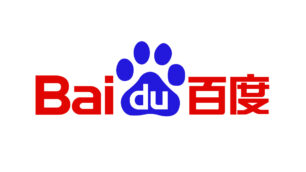По мере того, как все больше компаний выходят на мировой рынок, SEO становится важнейшим элементом их маркетинговой стратегии. Независимо от того, ориентируетесь ли вы на китайско-язычную аудиторию в Китае или других частях мира, оптимизация ваших веб-страниц для китайского языка может улучшить видимость поиска, трафик и вовлеченность.
В этой статье мы обсудим лучшие практики оптимизации ваших URL-адресов для таргетинга на китайский язык в SEO.
1. Используйте ccTLD или подкаталог для таргетинга на китайский язык
Одним из первых шагов в оптимизации ваших URL-адресов для таргетинга на китайский язык является выбор соответствующего домена верхнего уровня (TLD) или подкаталога. Существует два популярных варианта: ccTLD (домен верхнего уровня с кодом страны) и подкаталог.
ccTLD, такие как .cn, .hk или .tw, — это расширение доменного имени, которое указывает на географическое местоположение веб-сайта. Например, домен с расширением .cn представляет веб-сайт, ориентированный на китайскую аудиторию в Китае. С другой стороны, подкаталог, такой как /cn или / zh, является подпапкой на веб-сайте, которая содержит контент специально для китайскоязычной аудитории.
Оба варианта имеют свои преимущества и недостатки. ccTLD может повысить рейтинг вашего сайта в результатах локального поиска, но для этого требуется отдельный домен для каждой страны, на которую вы ориентируетесь, что может быть дорогостоящим и отнимать много времени на управление. Подкаталогом, с другой стороны, легче управлять в пределах одного домена, но он может не иметь такого же уровня таргетинга на географическую привязку.
2. Используйте китайские символы в URL-адресах
После того, как вы выбрали подходящий TLD или подкаталог, следующим шагом будет использование китайских символов в ваших URL-адресах. Это важно, потому что китайские символы являются основным способом поиска и навигации аудитории, говорящей на китайском языке, в Интернете.
Использование китайских символов в URL-адресах также может помочь поисковым системам понять содержание вашей веб-страницы, что может повысить ваш рейтинг по соответствующим поисковым запросам на китайском языке.
Например, вместо URL-адреса типа www.example.com/page1 вы можете использовать URL-адрес типа www.example.com/中文页面1. Этот URL-адрес содержит китайские символы, которые указывают на содержимое веб-страницы на китайском языке.
3. Включите в URL-адреса релевантные ключевые слова
В дополнение к использованию китайских символов важно включать в свои URL-адреса релевантные ключевые слова. Это может повысить рейтинг вашей веб-страницы по поисковым запросам на китайском языке, связанным с вашим бизнесом или отраслью.
При выборе ключевых слов для ваших URL-адресов убедитесь, что они соответствуют содержанию вашей веб-страницы и имеют высокий объем поиска в поисковых системах на китайском языке. Избегайте использования общих или нерелевантных ключевых слов, которые могут повредить вашему рейтингу.
Например, если ваша веб-страница посвящена рецептам китайской кухни, вы можете использовать URL-адрес типа www.example.com/中式美食食谱 . Этот URL-адрес содержит китайские символы и соответствующие ключевые слова, которые указывают на содержание веб-страницы.
4. Используйте дефисы для разделения слов в URL-адресах
При использовании китайских символов и ключевых слов в URL-адресах важно разделять слова дефисами. Это может сделать URL-адреса более читаемыми и понятными как для поисковых систем, так и для пользователей.
Например, вместо URL-адреса типа www.example.com/中式美食食谱 вы можете использовать URL-адрес типа www.example.com/中式-美食-食谱. Этот URL-адрес содержит дефисы, разделяющие слова и делающие его более читаемым.
5. Избегайте использования динамических URL-адресов
Динамические URL-адреса — это URL-адреса, содержащие параметры или переменные, такие как www.example.com/page?id=123 . Эти типы URL-адресов часто генерируются веб-приложениями динамически и могут вызывать проблемы с SEO.
Поисковым системам может быть сложно сканировать и индексировать динамические URL-адреса, что может повредить вашему рейтингу. Кроме того, динамические URL-адреса могут сбивать с толку пользователей, их трудно запоминать и делиться ими.
Вместо этого используйте статические URL-адреса, содержащие китайские символы, релевантные ключевые слова и дефисы. Это может улучшить возможность обхода и индексации, а также сделать URL-адреса более удобочитаемыми для пользователей.
Например, вместо использования динамического URL-адреса типа www.example.com/page?id=123 вы можете использовать статический URL-адрес типа www.example.com/中式-美食-食谱.
Заключение
Оптимизация URL-адресов для таргетинга на китайском языке может улучшить видимость вашего сайта в поиске, трафик и вовлеченность. Выбирая подходящий TLD или подкаталог, используя китайские символы и релевантные ключевые слова, разделяя слова дефисами и избегая динамических URL-адресов, вы можете создавать URL-адреса, оптимизированные для поисковых систем и пользователей на китайском языке.
Помните, SEO — это непрерывный процесс, и важно быть в курсе отраслевых тенденций и лучших практик. Постоянно оптимизируя свой сайт для таргетинга на китайский язык, вы можете улучшить свой рейтинг и охватить новую аудиторию.
